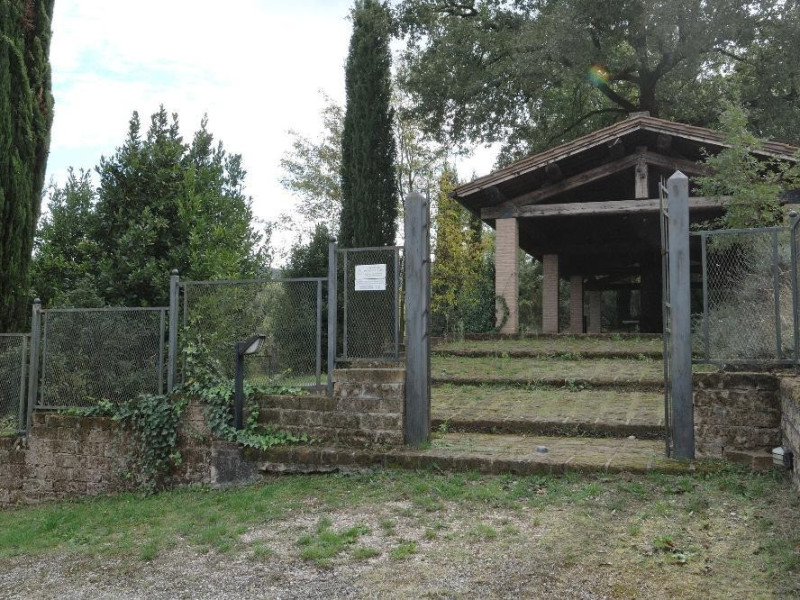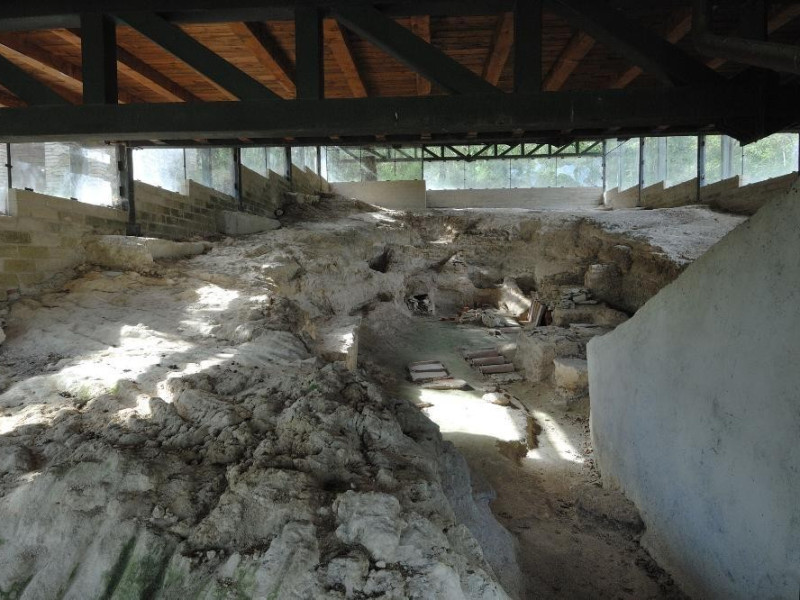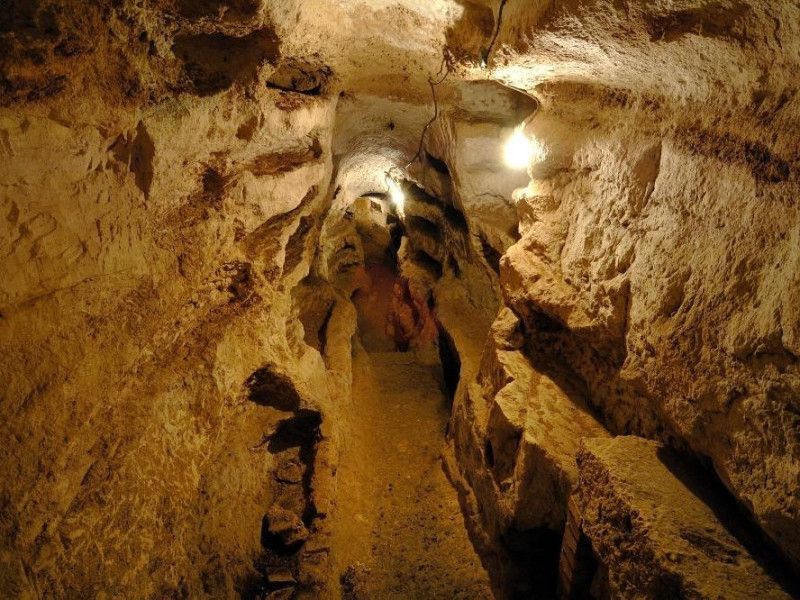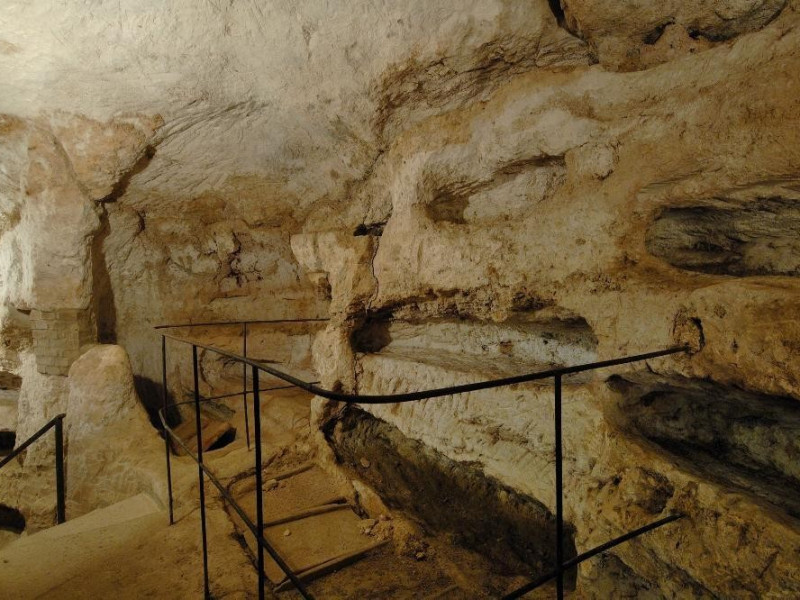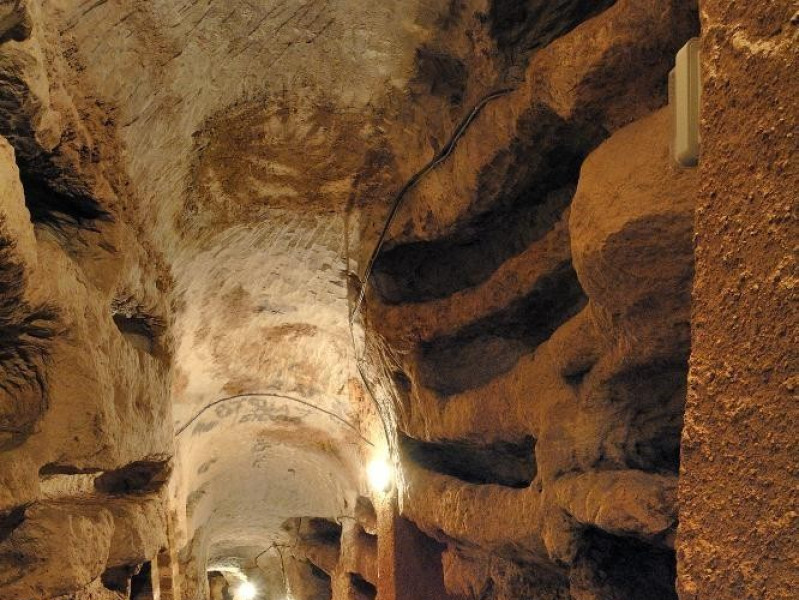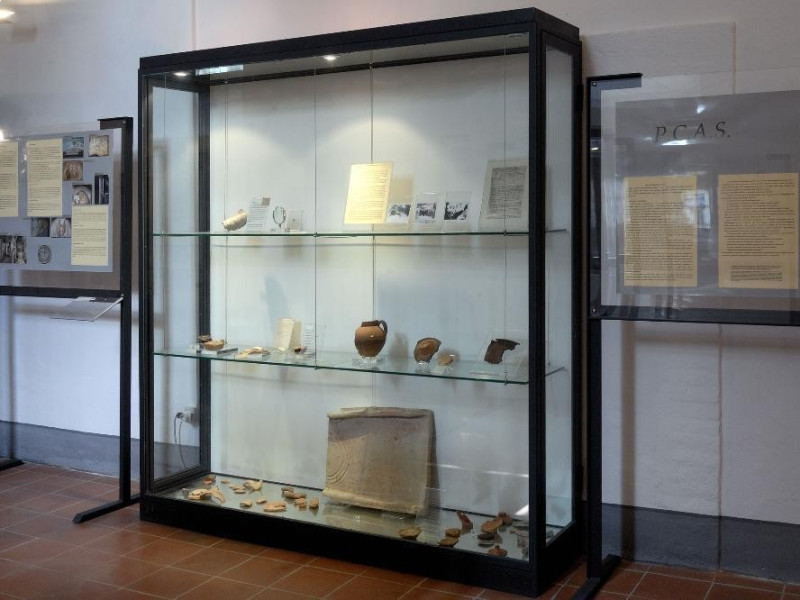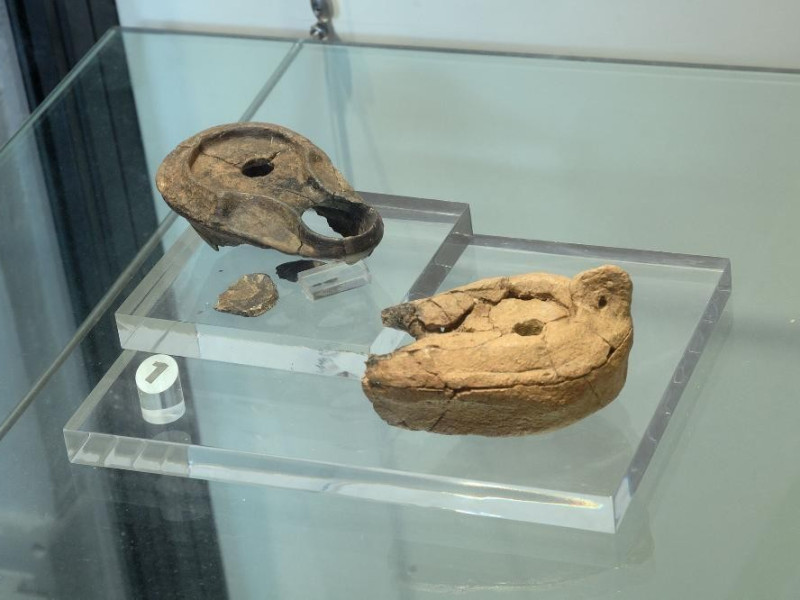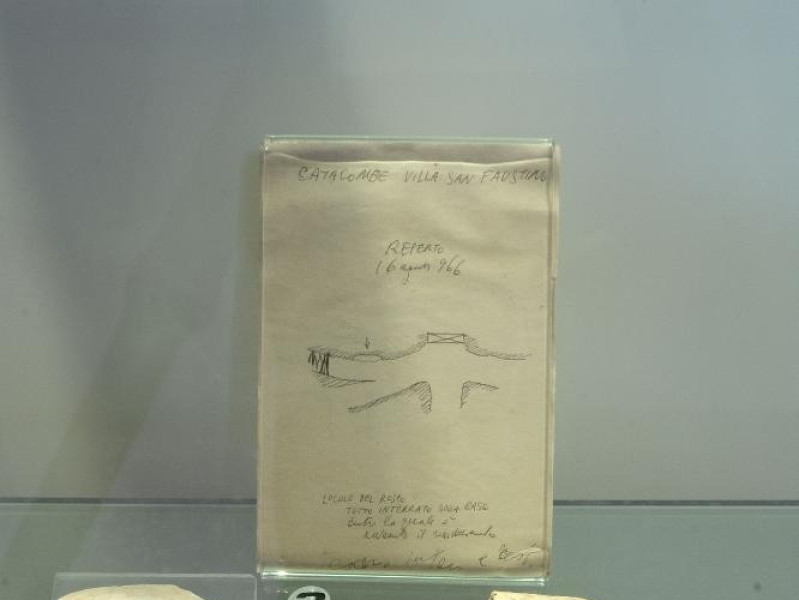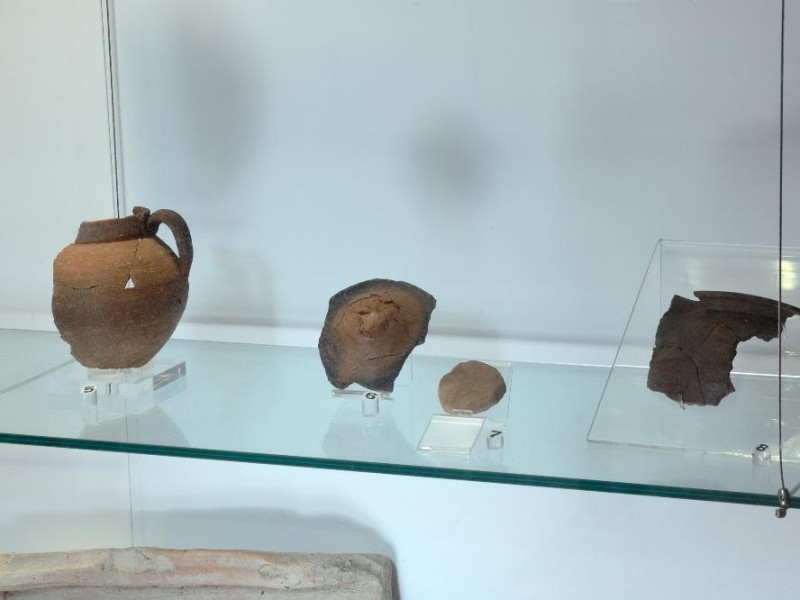Luogo - Museum
Catacomba di Villa San Faustino
Where
Vocabolo Schiaccia, 84, Massa Martana (Perugia)
The Catacombs of Villa San Faustino
The Catacomba di Villa San Faustino lays in the locality of Grotta Traiana, near the small village of Villa San Giustino, in the Municipality of Massa Martana, at a short distance from the ancient route of Via Flaminia and Ponte Fonnaia Bridge.
This is the sole Catacomb known in Umbria, and is a precious evidence of the spreading of Christianity, which had already arrived in Umbria around the 4th century A.D., by means of the Flaminian Way. The definitive arrangement of the entrance and the long gallery makes the visit easier. The gallery leads to the hypogeal chamber, based on the system of loculi—sepulchral niches—placed on the walls, which reflects the communitarian spirit animating the early Christians.
Reported for the first time in 1691 by local scholars under the name of Grotte di Traiano—Traiano’s Caves—the catacombs were rediscovered in 1900, and around the early 1940s were the subject of two excavation campaigns, which uncovered the majority of the galleries that were later used as air-raid shelter during the WWII conflict. Restoration works done to allow visitors to enter were carried out one after the other from 1996 to 1997, during which a new area—a small funerary Basilica strictly destined for cult activities—was discovered.
The catacombs develop through a straight corridor, 22 meters long, which penetrates inside the hill and goes 7 meters deep into the ground; four galleries depart from this corridor, two on each side, and one of them has a semi-circular course. They are 1,50 meters wide and are covered by a segmental vault. A series of niches of various dimensions open in rows along the walls, one above the other. They are often sealed with large tiles, and furnished with lucerne—simple terracotta oil lamps—while on the pavement some formae have been excavated and covered with tiles, which are engraved—before firing—with circular signs. The absence of inscriptions with the names of the deceased, which are usually found on marble slabs covering the tombs, leads to the conclusion that the catacombs belonged to an illiterate sector of society. Lucernes and other materials recovered on the site suggest the area was attended around the 4th and 5th century A.D.
The practice of burying deceased people underground dates back to the Etruscans, but with Christianity ever more complex and vast hypogeal burials were created to host an entire community in a sole necropolis. The ancient term to designate these sites is coemeterium that comes from Greek and means “dormitory”. The term catacomb, originally used to designate only the important complex of San Sebastiano on Via Appia, was extended only later to all Christian cemeteries.
